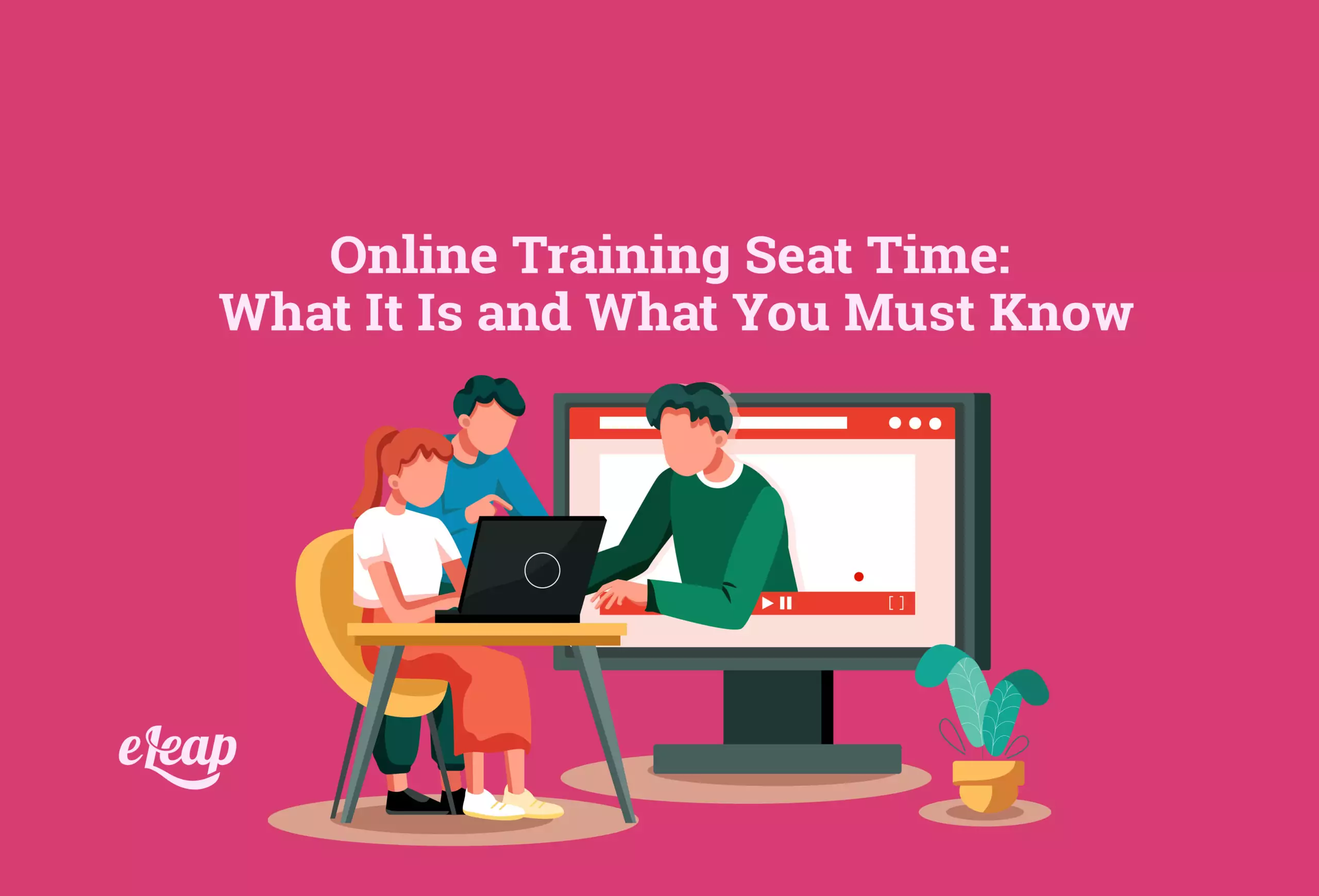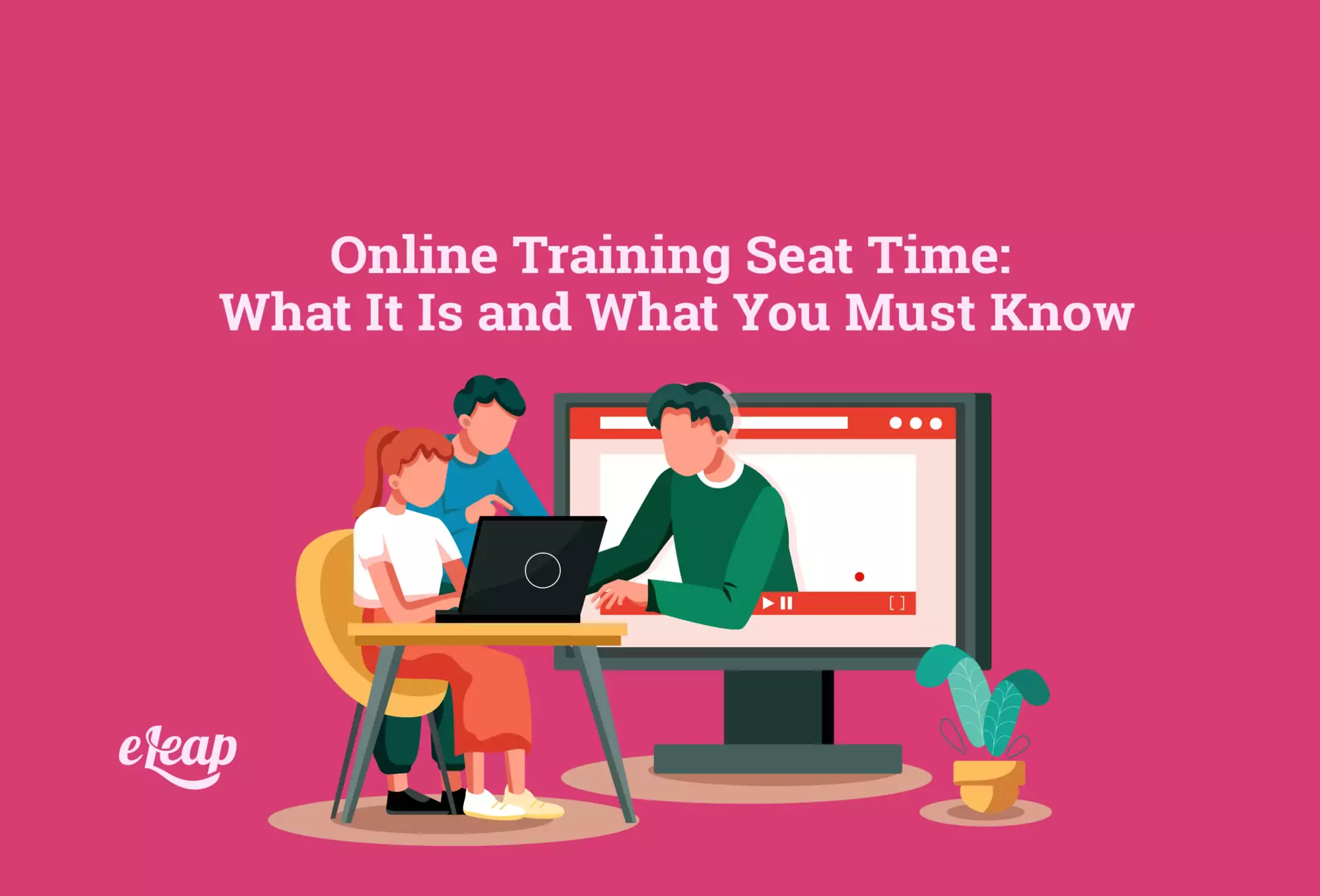Online Training Seat Time: What It Is and What You Must Know

Online training offers many advantages for organizations and their employees. It can often be completed from anywhere, offering a more agile solution to training and development needs. It can be chunked into bite-sized portions, and it can be turned into an interactive experience. However, when designing your online training, it’s also critical to consider seat time and what it means for your learners.

What Is Seat Time?
Simply put, seat time is the amount of time your learners have to spend to complete an online training course. While they might not be seated at a desk or table in the HR training room, and they could actually be standing, lying down, or in any other position if your training is mobile-friendly, the concept is the same.
What’s the Problem with Seat Time?
All online courses have some amount of seat time. However, the longer the time, the more challenging it is for employees to complete their training. The longer it takes, the more disengaged your learners become, the less information they’ll retain, and the more likely they are to opt out early.
Of course, length is relative when it comes to online training, so how do you tell if your seat time is too long? Let’s explore some of the signs that could indicate a problem.
Completion Rates Decline
One sure sign that there’s a problem (which may be long seat time) is declining completion rates or low rates from the beginning. This is nothing more than a measure of how many people begin the training versus the number that complete it. If you have more people start than finish, something is preventing them from moving forward.
In reality, that something could be almost anything, from work interruptions to family issues, and more. However, there’s a high probability that the course is simply too time-consuming for many employees to complete. Take a deep dive here and determine why people are not completing the lessons – surveys can help you take the pulse of learners and find out what’s going on.
Lack of Competition
Is your learning content gamified? Gamification is a proven way to increase engagement, boost performance, and encourage people to complete courses in exchange for something valuable. It could be a badge or access to specific content. It might be a more tangible reward, such as a certificate or even a prize. However, if you’re seeing low competition rates, it’s a sign that there’s something to be addressed.
Your rules might be too complex, for instance. Or maybe the reward being offered isn’t really something your employees value. However, it could also be that it just takes too much seat time to complete the course and people are dropping out before they reach the assessment stage. Again, surveys and questionnaires can surface important insights here and allow you to move forward.
Low Test Scores
The only way to determine whether your training is successful is through an assessment. That might be in the course – a quiz or test, for instance. It might be something done in the physical world, such as a performance assessment in which a manager observes an employee’s performance to see their ability to put new skills and knowledge to work. If your assessments end poorly, there’s a problem.
Most learning management systems (LMSs) provide powerful analytics that help you drill down to low test scores, which is important if you allow learners to retake assessments. With these tools, you can also tell you if learners completed all the segments of your online training, or if they skipped sections, and if those sections correlate to missed questions on the assessment. If that’s the case, you can start to fine-tune things by reducing seat time, which makes it harder to retain knowledge.
Solid Completion Rates but Low Assessment Scores
Your LMS provides tools to help you track learner journeys through each course. That’s great news, as it gives you the chance to check out completion rates, which should indicate at least some degree of success in learners absorbing new knowledge. However, if you see solid completion rates but your assessment scores are still in the tank, there’s a problem.
What we’re talking about here is cognitive overload – the brain’s inability to absorb new information due to exhaustion. It’s directly related to long seat times. The more time a learner must spend trying to absorb new information, the less likely it is that this information will “stick”. If you’re noticing this trend, it’s time to rethink your strategy because your seat times are probably too long.
Employees Falling Behind
In an ideal world, your employees would take training courses in a logical, orderly manner that provides plenty of time from start to finish, including certification by a specific date (where applicable, of course). However, many factors can complicate this, from work duties to family emergencies. Long seat times can also throw that proverbial wrench into the works.
The best indicator here is if you have a large number of employees who routinely leave their training for the last minute and then try to cram it all in before the certification deadline. Chances are good that this action is directly related to the seat time required by your course. As a note, it may also be related to poor management if your leadership isn’t on board with the need for training in the first place.
How to Fight Long Seat Times
There is only one way to fight long seat times within online learning – break things down. Transform long courses into multi-part series. Reduce the amount of text per slide. Reimagine text-heavy pages into other formats that are faster and easier to digest, like video, animation, and more.
Most importantly, use the analytics within your LMS to make information-driven decisions that ultimately lead to better learner outcomes. Don’t guess about the cause of low completion rates or employees falling behind. Use your data to provide accurate, concrete evidence and then take action.